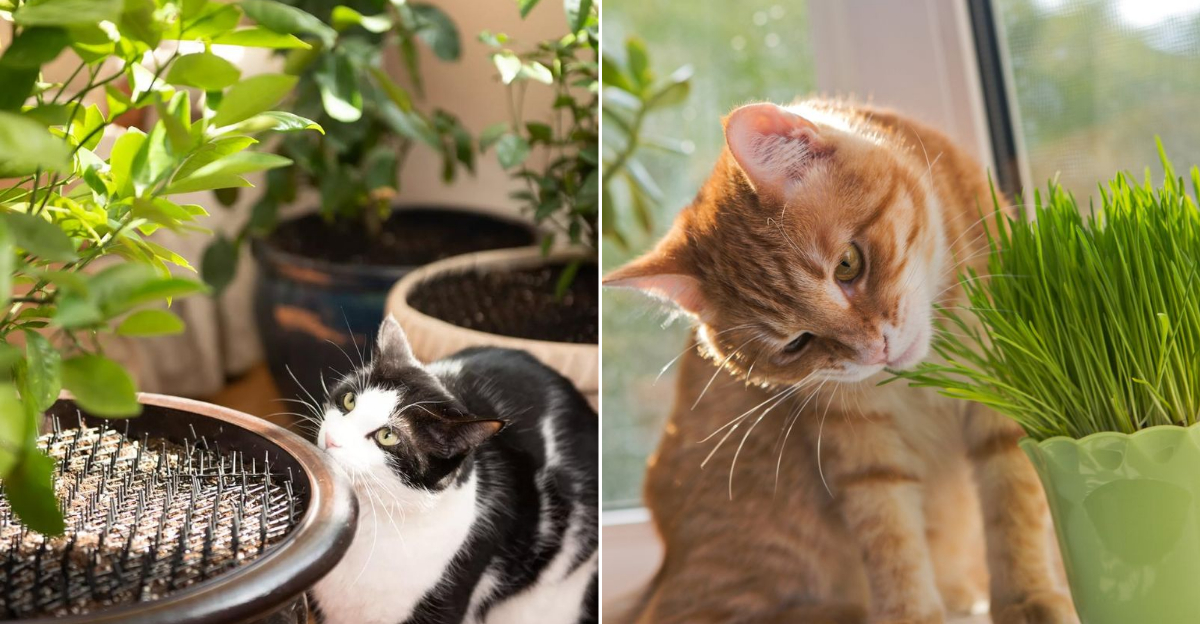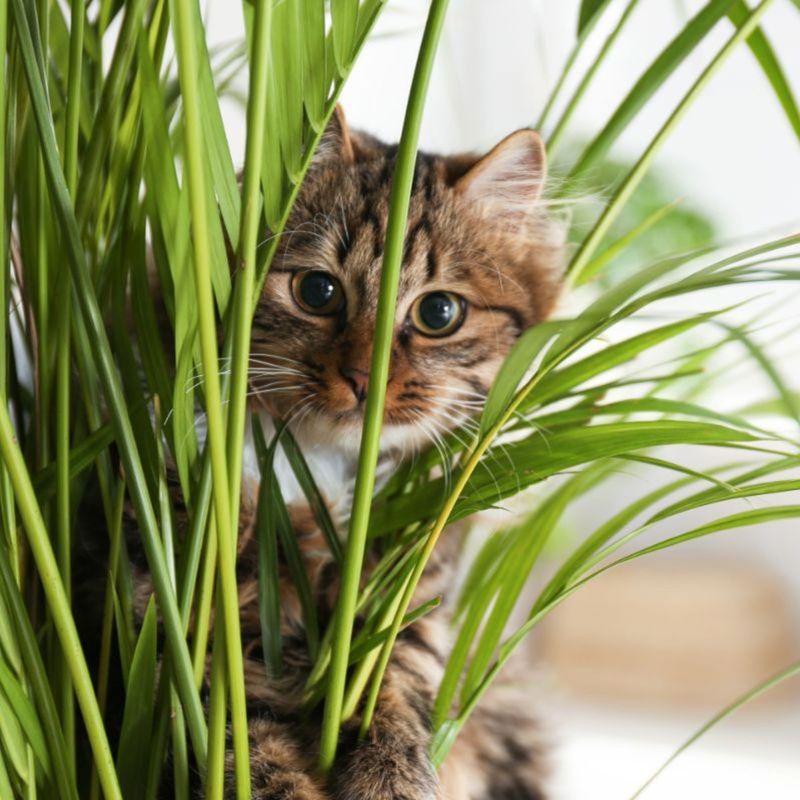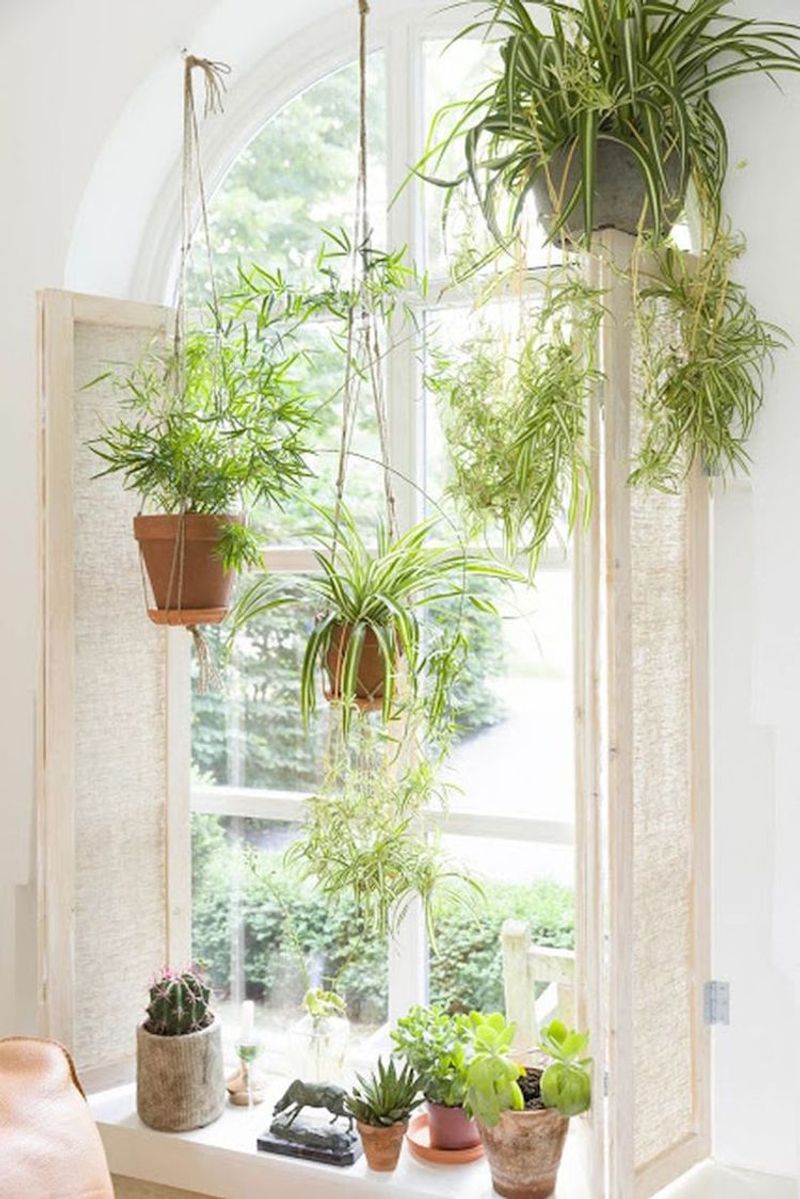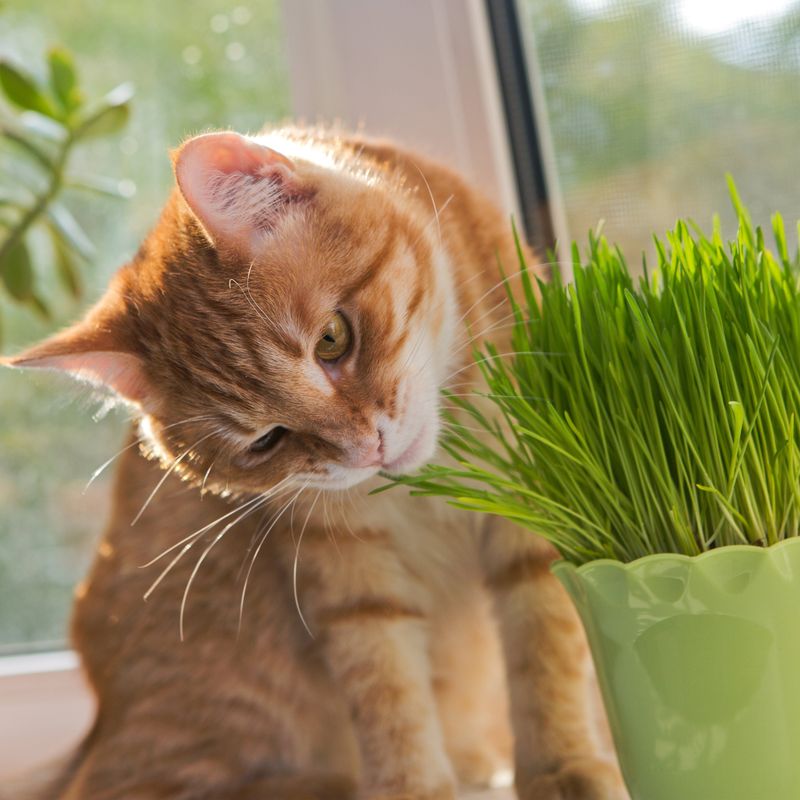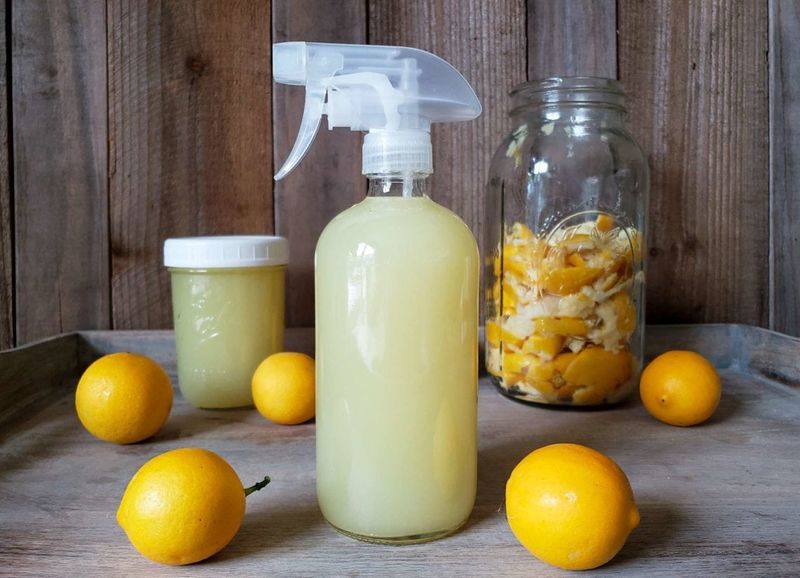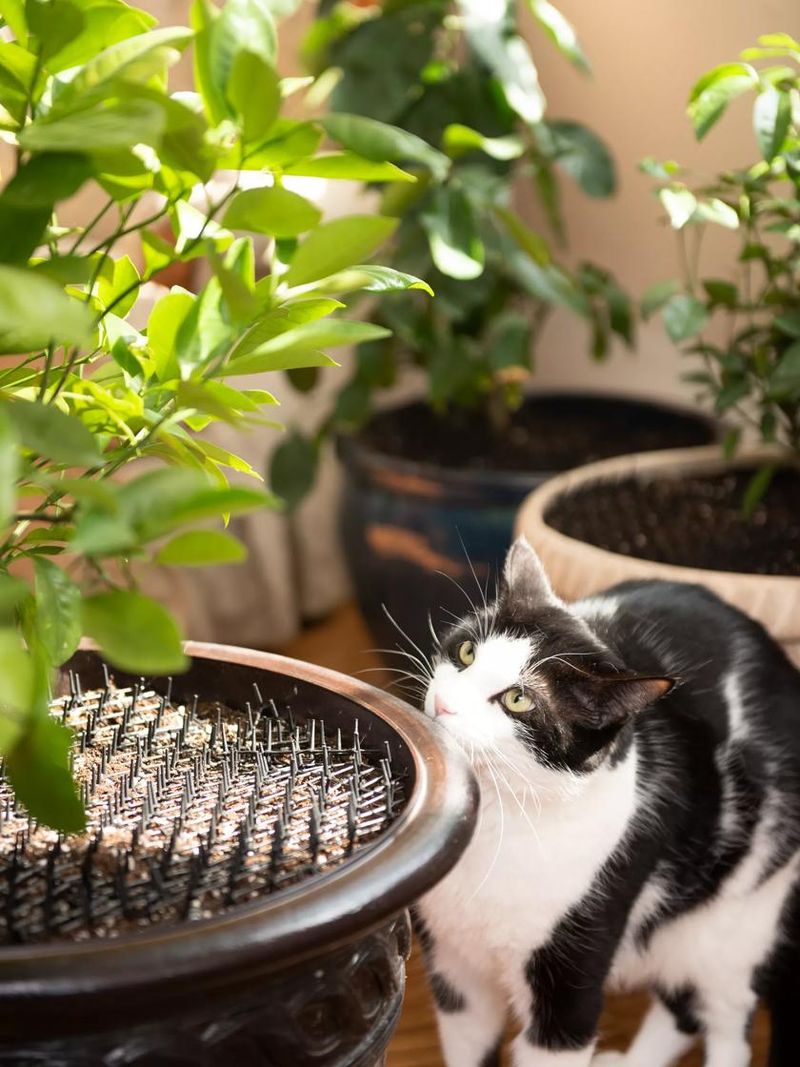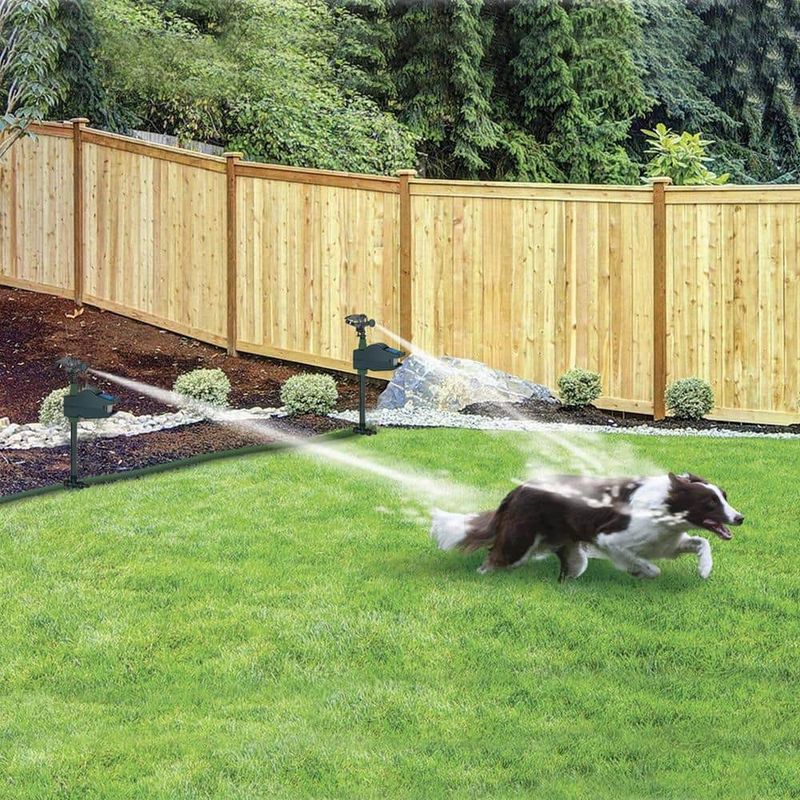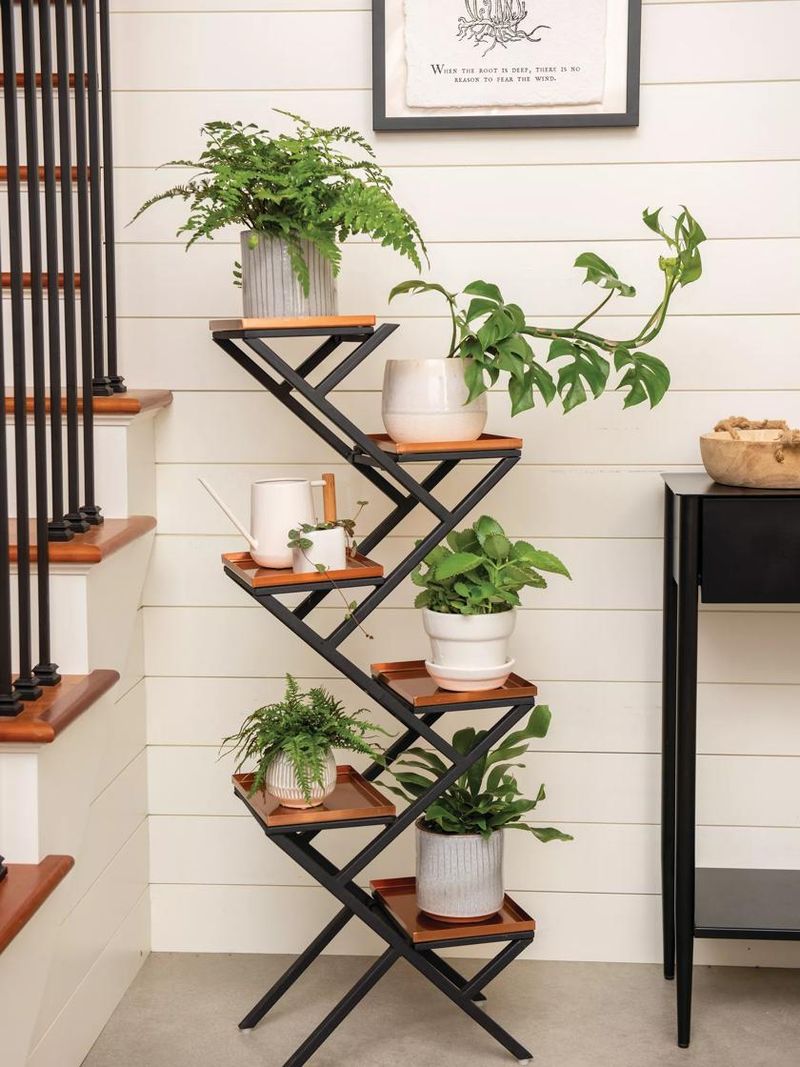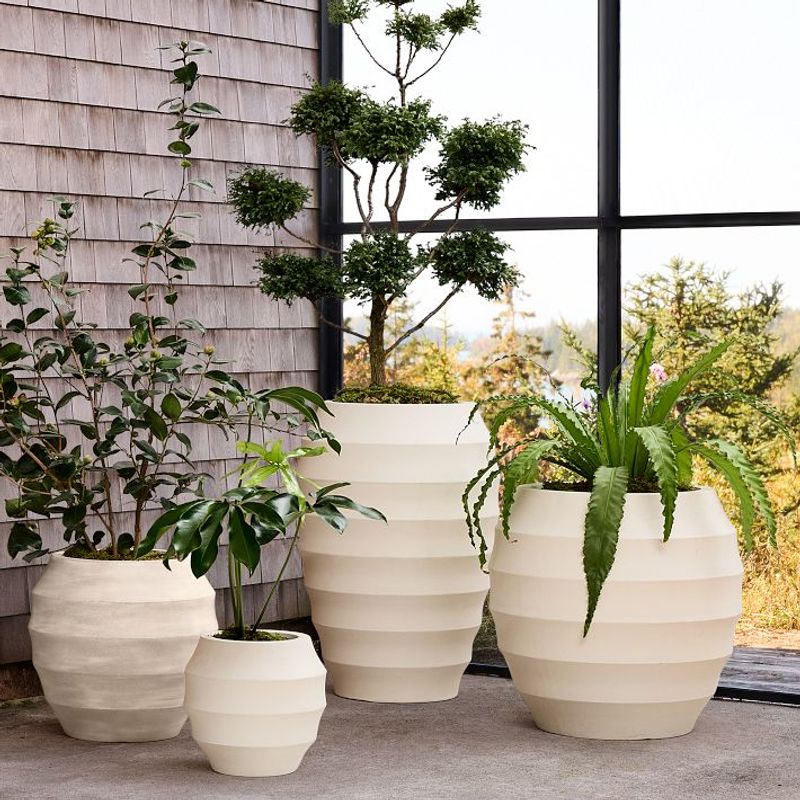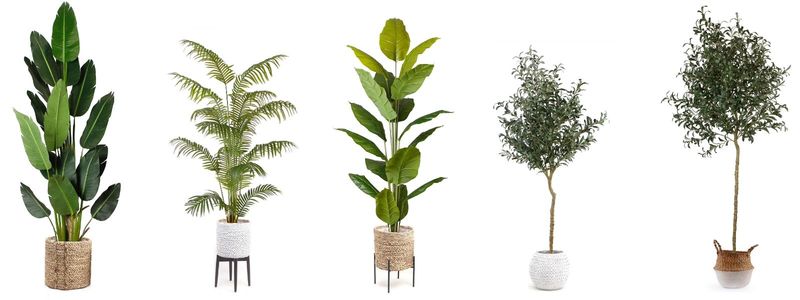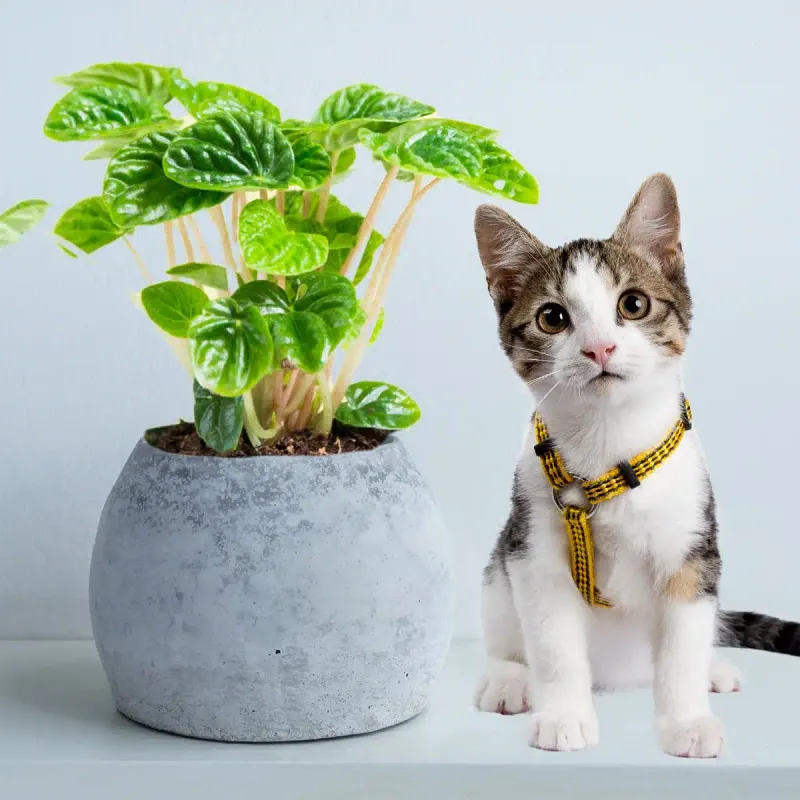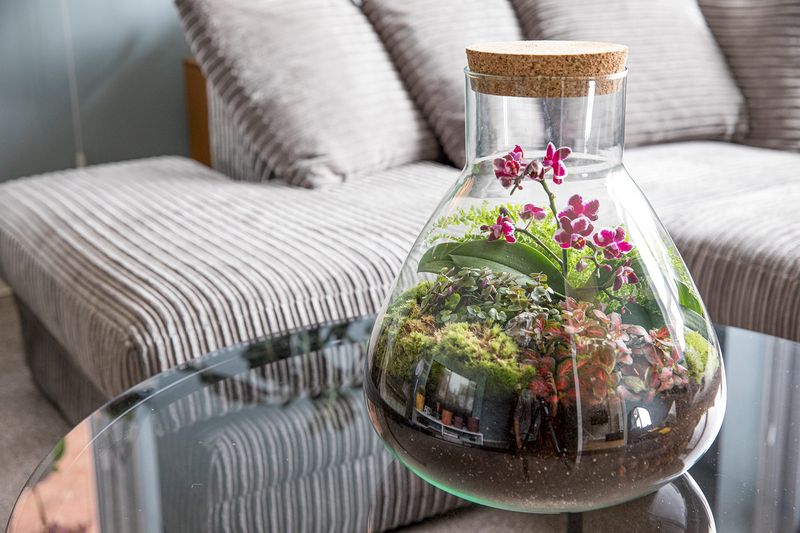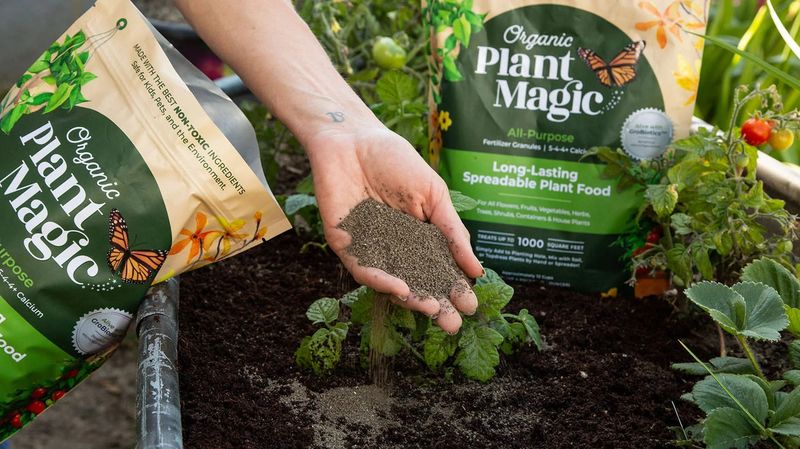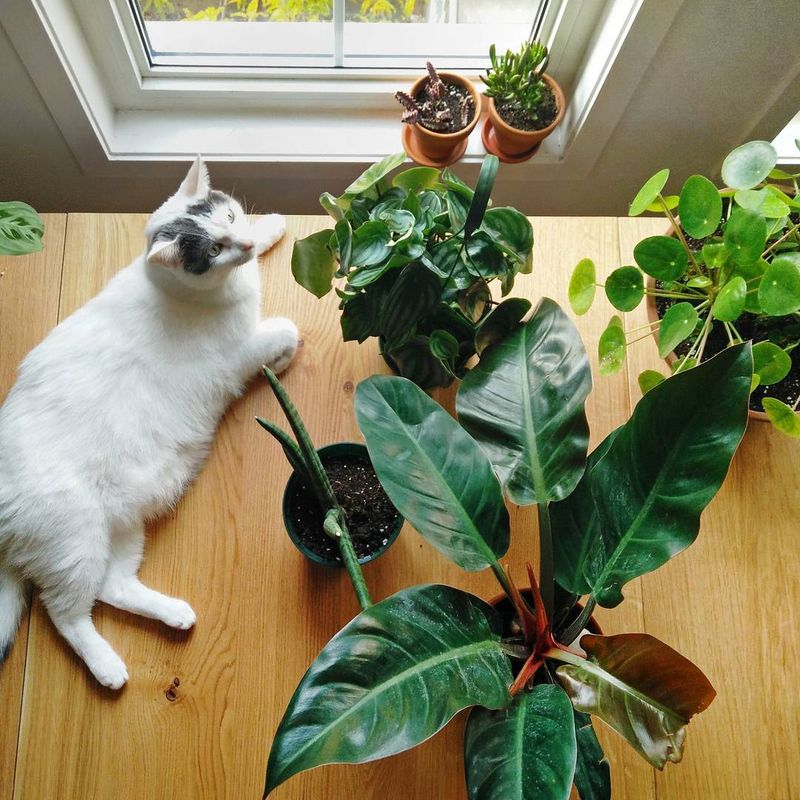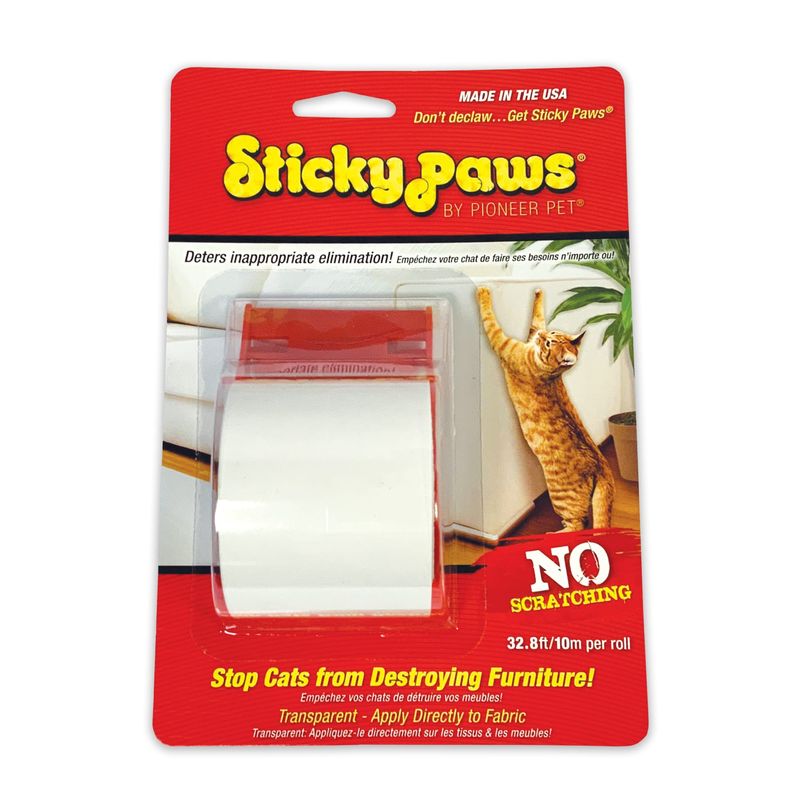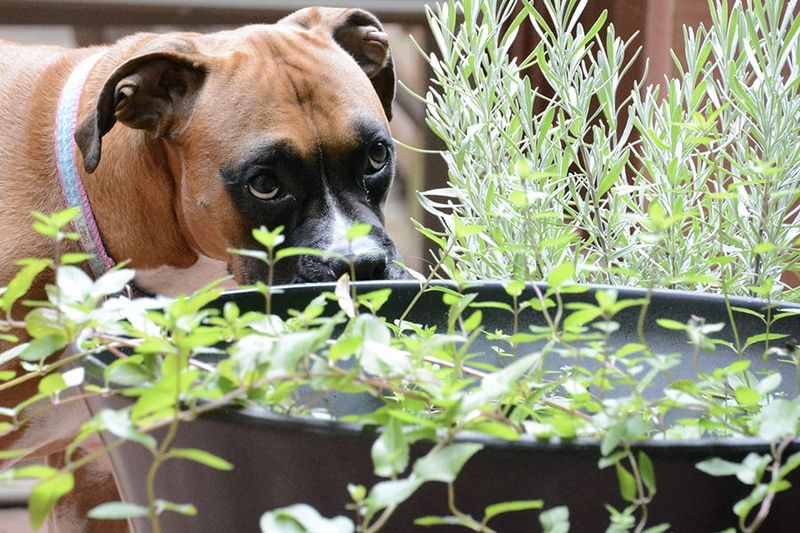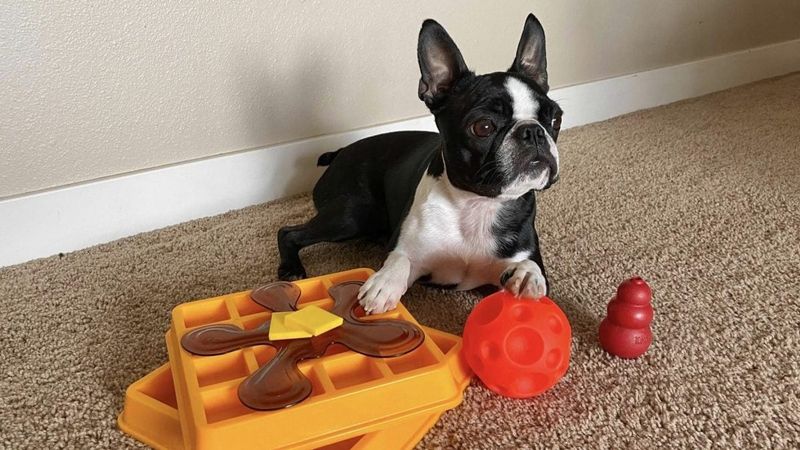Welcoming plants into your home doesn’t mean compromising on your pet’s safety. Whether you’re a seasoned plant enthusiast or a beginner, these 17 genius pet-friendly plant hacks will keep your furry friends safe and your greenery thriving.
From choosing nontoxic plants to clever deterrents, discover how you can create an environment where both pets and plants coexist harmoniously. Elevate your home’s aesthetics while ensuring your pets remain curious yet safe.
These tips blend practicality with style, making plant care a joy rather than a chore. Let’s explore these pivotal hacks for a harmonious living space.
1. Choose Nontoxic Plants First
Begin with pet-safe plants like spider plants, calatheas, and parlor palms to ensure your pets can explore without harm. These species are known for their lush, vibrant leaves and are harmless to cats and dogs.
Imagine a sunny spot in your living room, adorned with these beauties, while your curious cat safely ponders their existence.
Not only do they bring life and color to your space, but they also add a layer of comfort knowing your pets can roam freely. Embrace safety without sacrificing the aesthetics of your green-filled abode.
2. Go Vertical with Hanging Planters
Elevate your plants using hanging planters to keep them out of reach from curious pets. Suspended from ceilings or mounted on walls, these planters create vertical green spaces that save floor space and protect plants from nibbling mouths and playful paws.
Picture a cascade of green trailing down, adding visual interest and elegance to your room. The added height not only protects but transforms your plants into a hanging masterpiece, stirring intrigue without the risk.
Invest in sturdy hooks to ensure your leafy friends remain secure above the fray.
3. Create a “Pet Plant Zone”
Designate a special area for plants that your pets can safely interact with. A windowsill or low shelf can serve as a “pet plant zone,” housing nontoxic cat grass or catnip.
Watch as your feline friend gleefully sniffs and explores these plants, engaging in playful antics. This space becomes a delightful pet playground, combining enrichment and safe botanical interaction.
Encourage curiosity without concern, knowing that this dedicated zone is a haven for both pets and plants. It’s a thoughtful blend of entertainment and peace of mind for pet owners.
4. Use Citrus Spray as a Natural Deterrent
Pets tend to shy away from citrus scents, making homemade citrus spray an effective deterrent. By mixing lemon or orange essential oils with water, you can create a natural boundary around your plants.
Imagine spritzing this refreshing concoction near your greenery, subtly keeping pets at a respectful distance. The tangy aroma delights humans while discouraging pets from approaching.
This eco-friendly solution not only protects your plants but also infuses your home with a crisp, invigorating scent, creating a pleasant atmosphere for all inhabitants.
5. Cover Soil with Decorative Stones or Mesh
Prevent pets from digging into plant soil by covering it with decorative stones or breathable mesh. This simple yet stylish solution deters curious paws while adding an aesthetic touch to your pots.
Picture a variety of smooth river stones elegantly topping the soil, creating a polished look that complements your interiors. The tactile barrier discourages digging, preserving your plant’s health and your home’s cleanliness.
Embrace this creative approach to soil protection, marrying functionality with design for a pet-friendly plant display.
6. Add Motion-Activated Pet Deterrents
Tech-savvy solutions like motion-activated deterrents can teach pets to avoid plant areas. These gadgets emit sounds or puffs of air when approached, gently training pets to keep their distance.
Envision a serene living room where plants flourish unbothered, thanks to these invisible guardians. The subtle cues from the deterrents create a boundary that pets learn to respect, ensuring peace between flora and fauna.
This modern approach integrates seamlessly into your home, offering a high-tech answer to age-old plant-pet conflicts.
7. Try Raised Planter Stands or Tables
Elevate your greenery with raised planter stands or tables, making them less accessible to pets. These stylish solutions not only deter curious critters but also enhance your décor, turning plants into striking focal points.
Picture pots perched elegantly on sleek stands, safely out of reach from prying paws. This elevated approach offers both protection and aesthetic appeal, redefining your plant arrangement.
By lifting your plants to a new height, you create an artful display that captivates while keeping pets at bay.
8. Use Heavy Pots to Prevent Tipping
Opt for heavy, stable pots to prevent accidental tipping by boisterous pets. Sturdy ceramic or stone planters offer peace of mind, ensuring your plants stay upright despite occasional nudges.
Imagine a robust planter standing confidently amidst playful pets, its weight providing stability and security. This choice not only safeguards your greenery but also adds an air of permanence and style to your home.
With heavy pots, you create a resilient plant environment, where beauty meets durability in harmony with your bustling household.
9. Swap in Faux Plants Where Needed
For spaces where real plants are too risky, consider incorporating realistic faux plants. These lifelike alternatives provide the lush look of greenery without the maintenance or potential danger to pets.
Visualize a room filled with vibrant faux foliage, adding texture and color without the worry of nibbling or soil mess. This strategy allows you to enjoy the beauty of plants in every corner of your home, regardless of pet activity.
Embrace faux solutions as a versatile, safe, and stylish option for pet-friendly interiors.
10. Train Pets with Positive Reinforcement
Encourage good behavior with positive reinforcement by rewarding pets for ignoring plants. Through consistent praise and treats, pets learn to respect plant spaces without fear or punishment.
Picture a joyful interaction between owner and pet, where treats symbolize lessons in courtesy. This method nurtures trust and cooperation, fostering a harmonious environment where pets coexist peacefully with indoor greenery.
By focusing on positive cues, you create a loving atmosphere that encourages pets to be mindful of their surroundings, turning training into a rewarding experience.
11. Keep Toxic Plants in Terrariums
For those cherished plants that aren’t pet-safe, consider displaying them in enclosed terrariums. These glass habitats protect both plant and pet, offering a visual delight without the risk.
Imagine a captivating terrarium on your shelf, its crystal-clear walls showcasing exotic greenery. The enclosed space keeps curious noses at bay, ensuring safety while adding a touch of elegance to your home.
This strategy allows you to appreciate non-pet-friendly plants responsibly, merging safety with aesthetic charm in a stunning display.
12. Avoid Fertilizers and Sprays with Harmful Chemicals
Choose organic fertilizers and treatments to cultivate your plants without endangering pets. Many commercial products contain harmful chemicals that can pose risks if ingested by curious animals.
Picture a garden table adorned with natural, pet-friendly products, supporting robust plant growth without the worry of toxicity. By opting for organic options, you maintain a green, safe environment for all household members.
This approach not only nurtures your plants but also respects your pet’s health, reflecting a mindful commitment to sustainable and safe gardening practices.
13. Add “No” Zones with Baby Gates or Playpens
Create off-limit zones for pets using baby gates or playpens, ensuring your plants have a safe space. These barriers can section off areas dedicated to more delicate or toxic plants, preventing unwanted access.
Visualize a cozy corner garden, its boundaries marked by sleek gates that blend seamlessly with your décor. This proactive setup establishes clear plant sanctuaries within your home, balancing aesthetic appeal with practical safety.
By defining these zones, you craft an environment where plants thrive, undisturbed, and pets roam freely elsewhere.
14. Rotate Tempting Plants Out of Reach
If a particular plant captures your pet’s attention, try rotating its position regularly to disrupt habitual interest. By changing locations, you keep pets guessing, reducing the temptation to investigate.
Picture a playful game of hide-and-seek between your pet and plants, where curiosity is piqued yet controlled. This simple tactic maintains a dynamic home environment while safeguarding greenery from eager exploration.
Rotating plants not only protects them but also refreshes your interior layout, offering new perspectives and intrigue for both pets and people.
15. Use Double-Stick Tape on Surfaces
Deter climbing cats with double-stick tape on plant shelves, as the sticky feel discourages exploration. This temporary fix is perfect for deterring feline acrobats from reaching forbidden foliage.
Imagine a sleek shelf adorned with lush pots, safely out of reach thanks to this subtle barrier. The tactile discomfort prompts cats to reconsider their climbing ambitions, preserving your plants’ pristine beauty.
This clever trick is both effective and unobtrusive, maintaining the elegance of your home while protecting your green investments from adventurous paws.
16. Keep a List of Toxic Plants Handy
Ensure safety by keeping a list of toxic plants readily accessible. This quick-reference guide acts as a safeguard when acquiring new plants or when friends gift you greenery.
Envision a chic kitchen bulletin board, where this vital information is pinned for easy viewing. Such preparedness empowers you to make informed decisions, avoiding potential hazards before they arise.
By being proactive, you protect your pets while fostering a nurturing environment for healthy plant diversity. This simple step is a cornerstone of responsible pet and plant care.
17. Incorporate Pet Toys and Enrichment Nearby
Distract pets from plants by offering nearby enrichment options like toys or puzzles. These diversions capture their attention, reducing the likelihood of plant interference.
Picture a colorful play area, buzzing with activity as pets engage with new stimuli, leaving plants untouched. By enriching your pet’s environment, you address their curiosity constructively, fostering a balanced cohabitation of flora and fauna.
This approach not only safeguards your greenery but also supports your pet’s mental and physical well-being, creating a lively, harmonious home.
